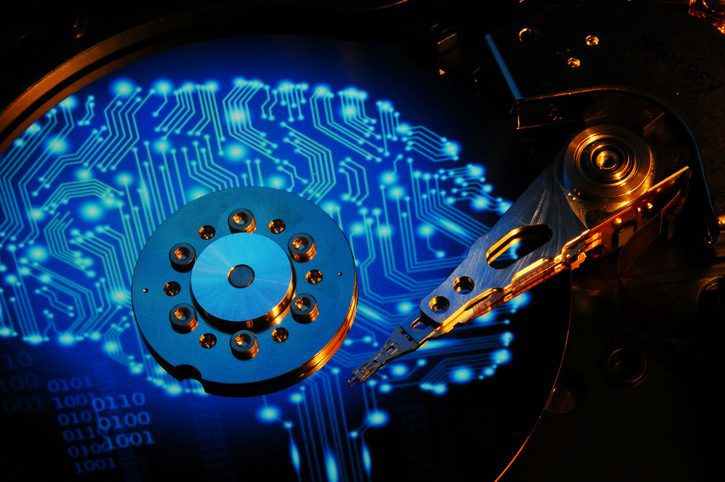Self-Monitoring, Analysis, and Reporting Technology (SMART) has been the industry standard for assessing hard drive health for decades. It monitors attributes like reallocated sectors, temperature, and spin-up time – offering a glimpse into drive reliability.
Key Takeaways
- SMART has limited interpretability.
While SMART tracks basic health metrics, its data is often ambiguous and hard to interpret without deep technical knowledge. - AI offers contextual intelligence that humans can’t match.
AI analyzes telemetry patterns across time and health metrics, predicting failures in a way that is not possible with the naked eye. - AI reduces false positives.
Unlike SMART’s sometimes noisy indicators, AI refines its predictions to avoid unnecessary drive replacements. - AI continuously learns from real-world data.
DA Drive Analyzer’s AI models are developed using millions of drives, and are periodically updated with new drive models, and their data—improving over time. - AI provides tangible benefits for NAS and enterprise environments.
Predictive models enable better RAID rebuild planning, drive replacement timing, and system uptime. - ULINK DA SmartQuest bridges the gap.
By turning SMART and other telemetry data into actionable insights, DA SmartQuest helps Windows PC users move from guesswork to informed decision-making.
Table of Contents
- Limitations of SMART
- Enter AI: Learning from Patterns in SMART that Humans Can’t See
- A Real-World Edge: NAS and Enterprise Drives
- Final Takeaway
- Frequently Asked Questions
Limitations of SMART
SMART can be hard to interpret by itself. Some raw SMART attributes that reflect errors may take on positive values very early on. But taking these positive values as signs that the drive will fail may result in a high number of false positives. Other SMART attribute values are hard to interpret because we may not intuitively know the threshold we should use to determine when things are going bad. For example, how high does temperature go before the drive is actually in danger? SMART attributes are health metrics. But sometimes, their meaning can be opaque to human readers without specialized knowledge such as how small variations or patterns among a set of attributes may contribute to the overall health of the drive.
Enter AI: Learning from Patterns in SMART that Humans Can’t See
AI-based drive failure prediction doesn’t just monitor parameters – it analyzes patterns across a wide range of telemetry data over time. By learning from millions of drive-hours across various workloads, AI models can:
- Predict failures days or even weeks in advance, giving IT teams time to replace or back up drives.
- Detect anomalies beyond SMART, identifying early signals from drive behavior, thermal trends, power fluctuations, and more.
- Reduce false positives, avoiding unnecessary replacements and saving costs.
- Continuously learn and improve, adapting to new drive models and usage environments.
AI brings contextual intelligence to storage health monitoring that a human reading of SMART simply lacks. This takes away guesswork.
A Real-World Edge: NAS and Enterprise Drives
For data-rich environments – like NAS setups – every second of downtime counts. Predictive AI models, trained on workload-specific telemetry, provide:
- Proactive drive replacement suggestions
- Optimized RAID rebuild planning
Final Takeaway
SMART is like checking your temperature. Doing so might vaguely tell you that might be sick, but it doesn’t necessarily tell you the severity of your illness. AI-driven diagnostics, when integrated early, empower users to get a clearer picture of when failure will actually strike. It’s time to evolve from human guesswork to data-driven failure forecasting. ULINK DA SmartQuest is the solution that brings this AI-driven insight to life.
Frequently Asked Questions
Q1: What is SMART and why is it still used?
A: SMART (Self-Monitoring, Analysis, and Reporting Technology) is a built-in drive monitoring system on many drives that tracks key health indicators. It’s a useful set of health metrics that have been widely adopted across the computer storage industry, though each manufacturer may choose to implement each SMART attribute differently.
Q2: Why isn’t SMART enough on its own?
A: SMART data can be cryptic and unreliable. Some warning signs appear too late, others trigger false alarms. It lacks contextual analysis and can’t learn from historical trends or multi-parameter interactions.
Q3: How does AI improve on SMART-based monitoring?
A: AI models analyze patterns across a wide range of telemetry data, including SMART, thermal, power, and usage data. They can detect early failure signals and provide actionable forecasts with fewer false alarms.
Q4: Can AI really predict drive failures in advance?
A: Yes. AI models trained on extensive datasets can predict failures days or even weeks ahead—giving users a valuable window to act before disaster strikes.
Q5: Is DA Drive Analyzer’s AI helpful for personal use or only enterprise environments?
A: DA Drive Analyzer’s AI is especially valuable in enterprise and NAS environments where downtime is costly, but it’s also accessible to personal users as well who are seek proactive drive maintenance.
Q6: What is ULINK DA SmartQuest?
A: ULINK DA SmartQuest is an AI-powered solution that transforms raw SMART and other drive telemetry data into predictive insights—helping users take action before drive failures occur.
Q7: How does ULINK DA SmartQuest reduce false positives?
A: By analyzing patterns across multiple variables and across time, it can pick up on nuances not identified by SMART thresholds alone.
Q8: Can AI models adapt to new drives and workloads?
A: Absolutely. One of AI’s biggest strengths is its ability to retrain and refine based on new data, ensuring relevance even as hardware evolves.

